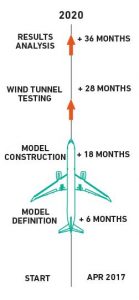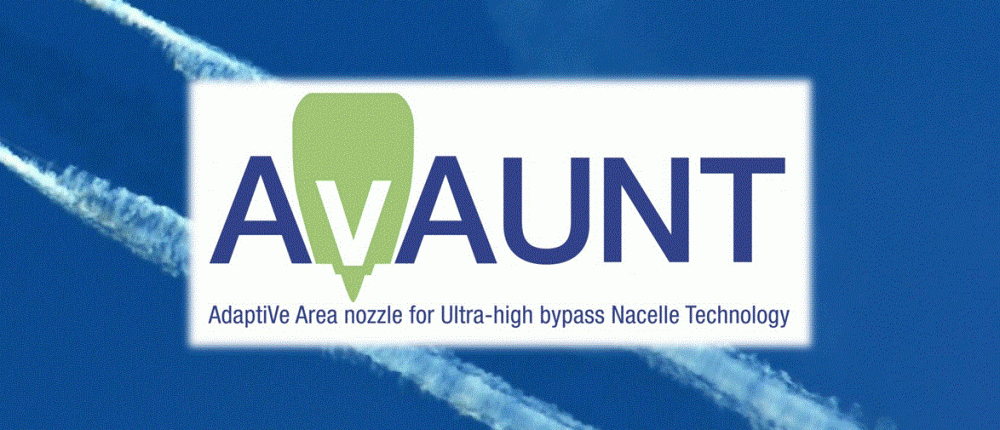The AvAUNT project follows the below timeline. Having completed the project Critical Design Review in March 2019, rig fabrication is now underway with a view to commence wind tunnel testing by the end of 2019 and completion of results analysis by early 2020.

There have been a number of notable achievements to date in the following areas:
Definitions of Models and Test Specifications
Knowing the maximum mass flow rate of ARA wind tunnel and defining the most critical test cases, the test rig scale that would a) allow the installation of a baseline reference nozzle design and b) be able to reach all required test conditions was calculated. The conceptual design of the rig assembly required for test, along with representative wing simulator (required for testing in the ‘installed’ configuration) and nacelle models have been produced. Completion of this Milestone was marked through the Preliminary Design Review, which was held in Month 11.
Rig Internal Aerodynamics
With the assistance of partner Queen’s University Belfast, complex CFD simulations have been conducted to understand the internal flow behaviour through the conceptualised test rig internals, hence confirming pressure supply requirements into the test rig to accurately achieve engine conditions to be tested.
CFD analysis continues as part of the detailed design activities as a means of validating the rig internal flow conditioner arrangements.
Rig External Aerodynamics
ARA have performed extensive numerical studies to define the shape, thickness, height and sweep of the test rig strut. This component will support the main rig body, which contains the flow conditioning section of the simulator, along with the actual nozzle model. The objective of this task was to optimise the strut design such that it could incorporate internal air supply pipes with the mass flow required for test conditions but at the same time minimise any interference effects with the nozzle model and wing panel at higher flow conditions.
The external design of the rig cylinder to which the model nozzles will be attached has also been evaluated to estimate expected boundary layer growth along the body length.
The wing panel has been designed to produce a spanwise quasi-2D flow representative of a civil transport aircraft at the powerplant wing section. The wing panel is also fitted with a hinged flap that allows the wing circulation to be varied.
The arrangement of the rig components has been defined to ease future rig upgrades that would increase the rig capabilities beyond the requirements of the AvAUNT programme.
